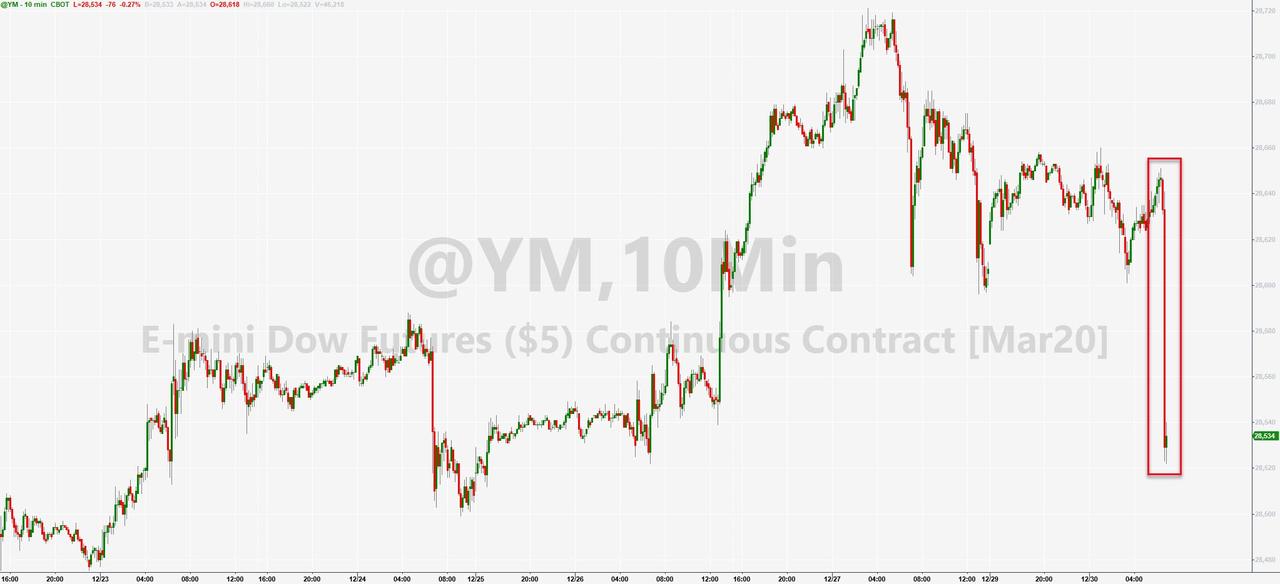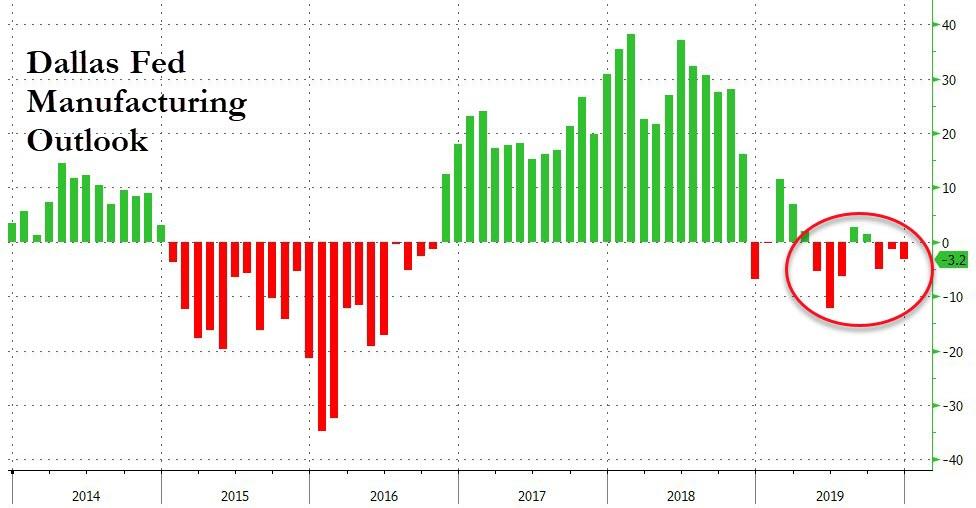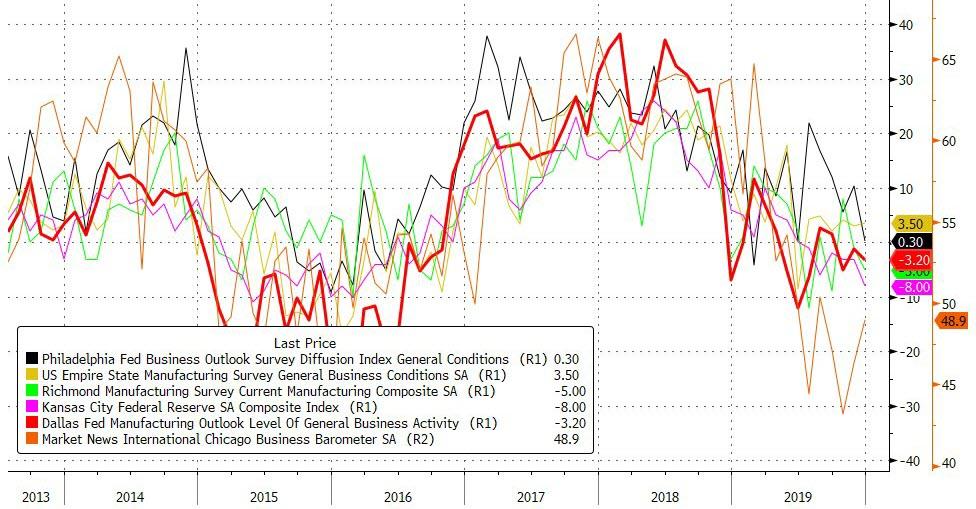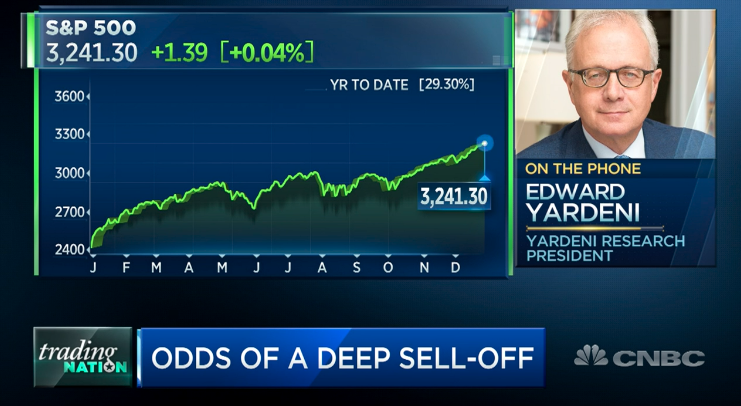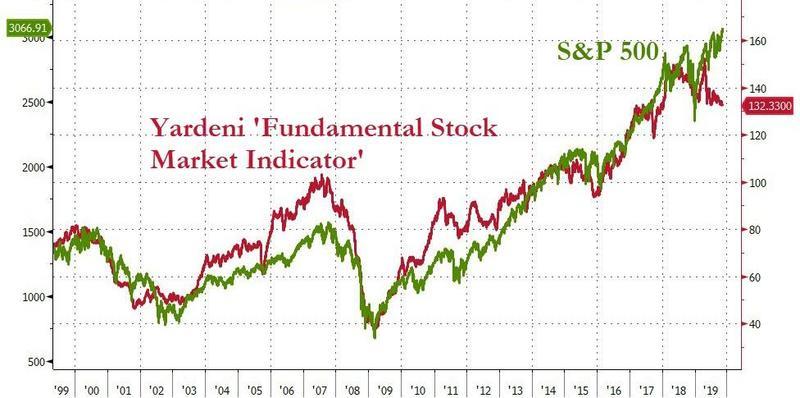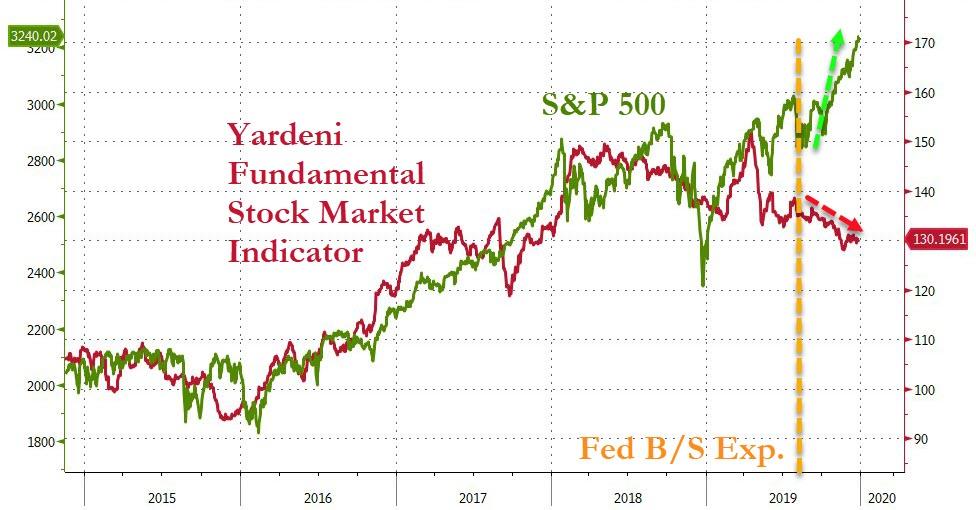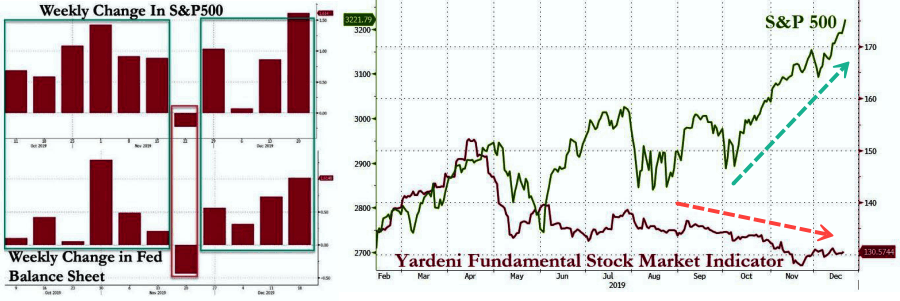Stock and bond prices were both down today - adding up to the worst combined day since 12/2
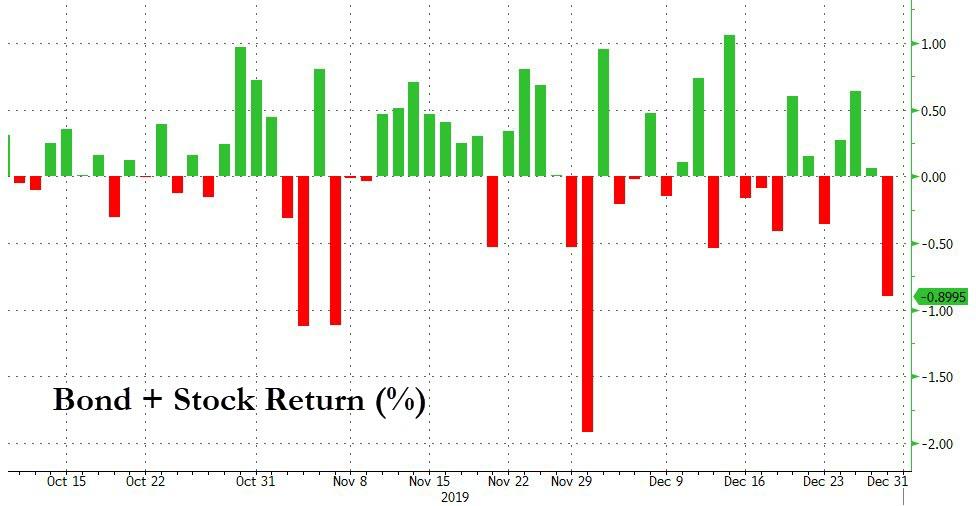
Source: Bloomberg
US Major equity indices were all lower on the day, despite a valiant attempt at a bounce...
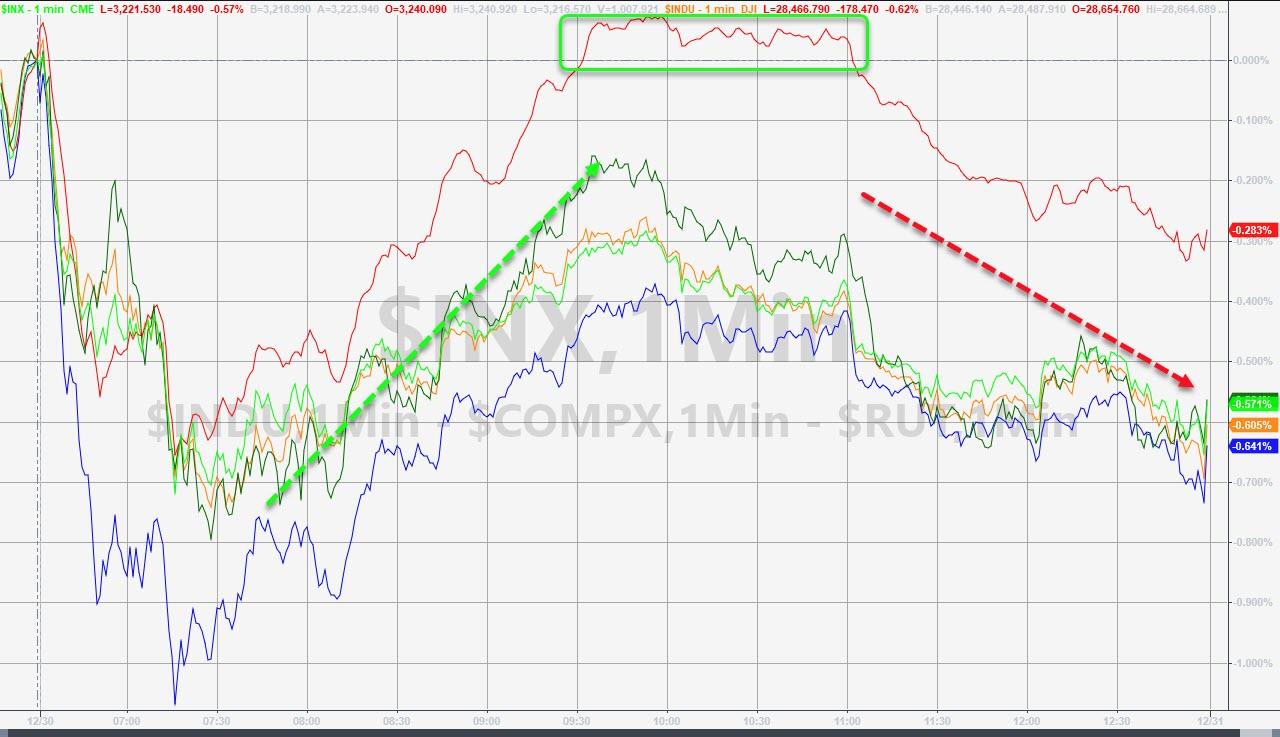
Source: Bloomberg
Chinese markets were higher overnight...
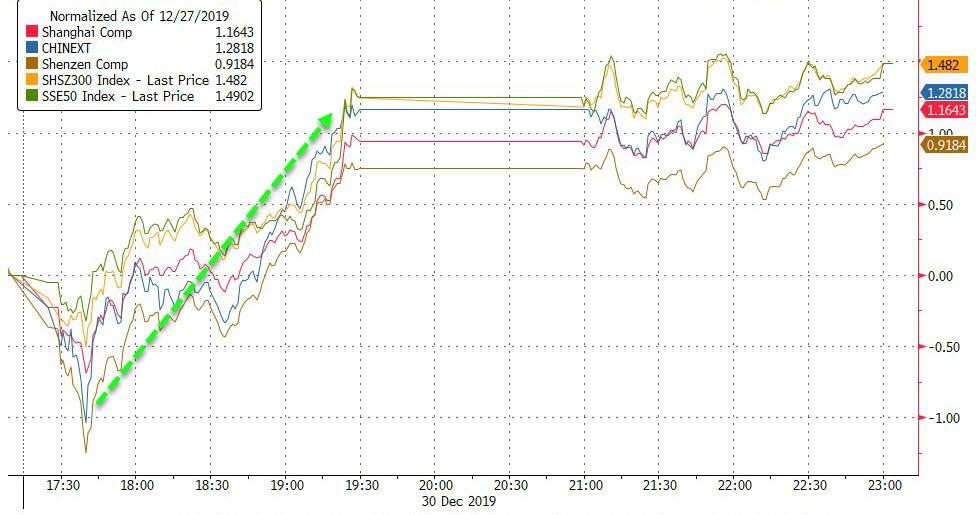
Source: Bloomberg
European stocks were lower today...
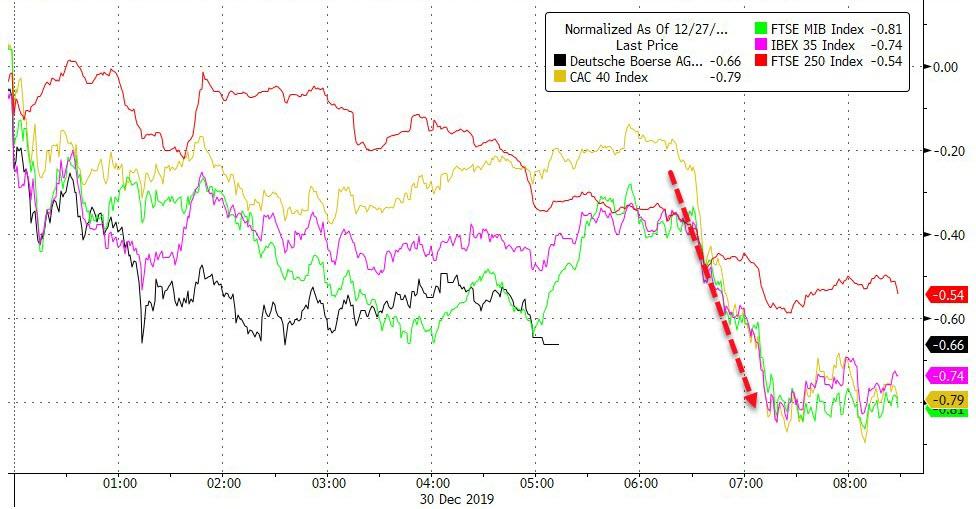
Source: Bloomberg
US markets perfectly reflected AAPL today as the buyback machine lifted the market then stalled...

US Majors also broke the December uptrend line today...

And Nasdaq fell (for the 2nd day) back below the key 9,000 level...
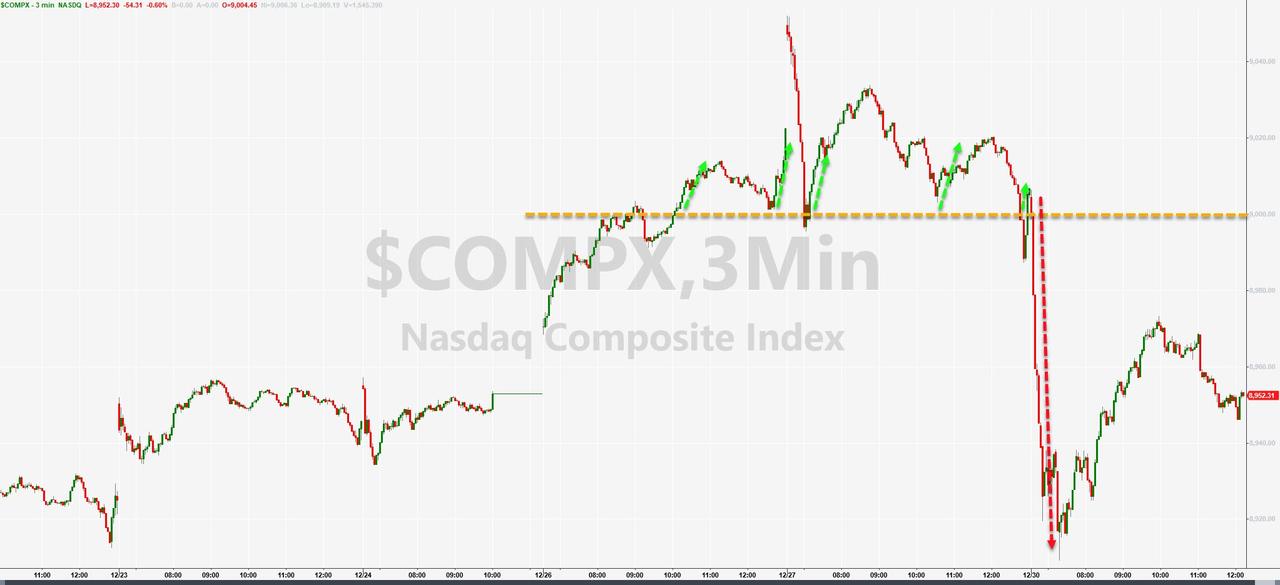
FANG stocks have erased last week's gains (biggest daily drop in six weeks)...
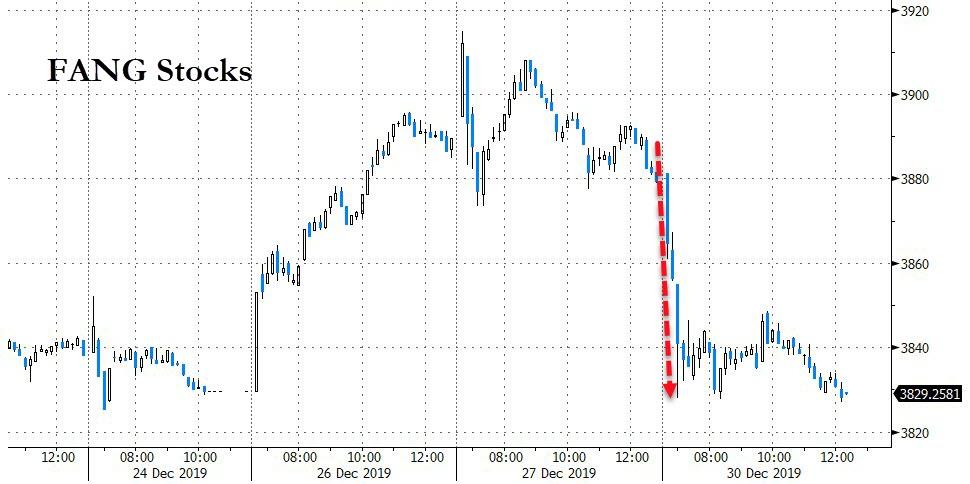
Shorts were squeezed as Europe closed, and managed to lift Small Caps to green, but could not hold it...

Source: Bloomberg
A 'mini' rotation today from TSLA into NIO?

VIX and stocks continued to decouple...

Source: Bloomberg
Credit and equity protection majorly decoupled...
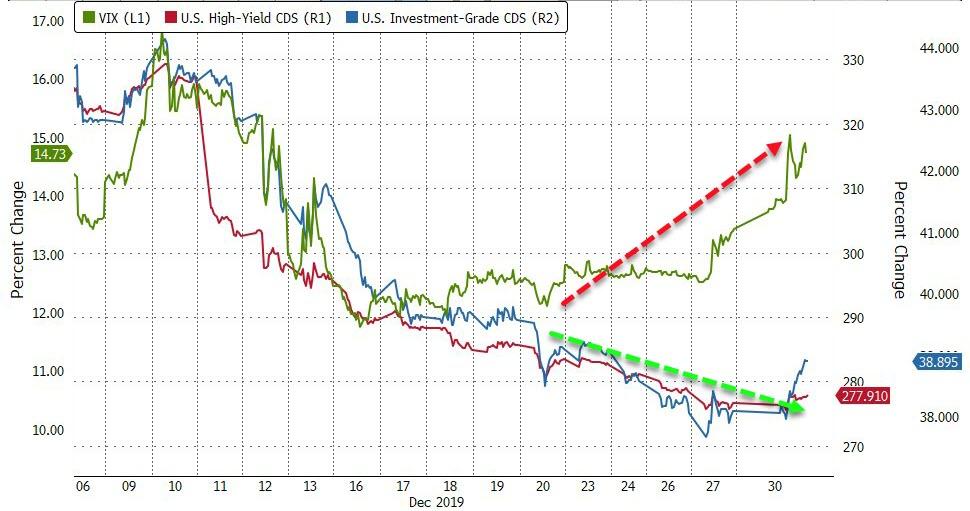
Source: Bloomberg
Bond yields (up) and stocks (down) recoupled today after the decoupling from 12/20...
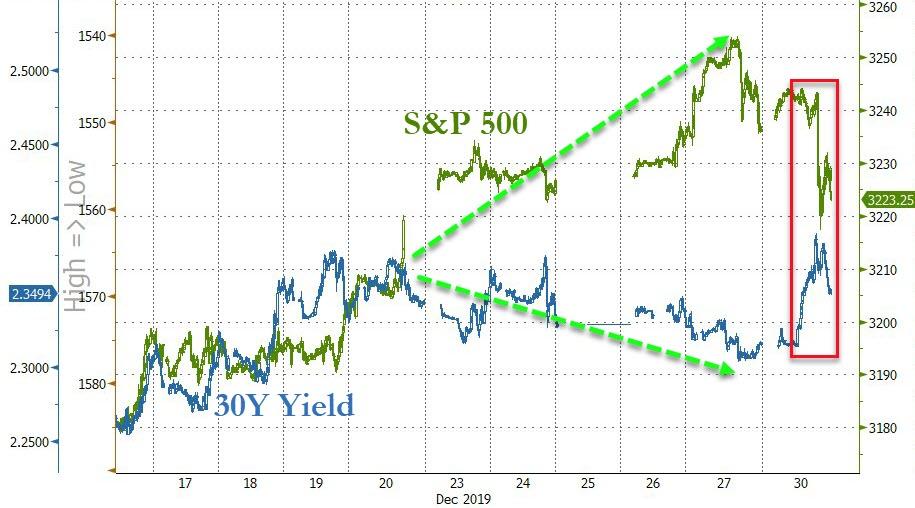
Source: Bloomberg
Once again the old pattern of EU selling and US buying is back for bonds...
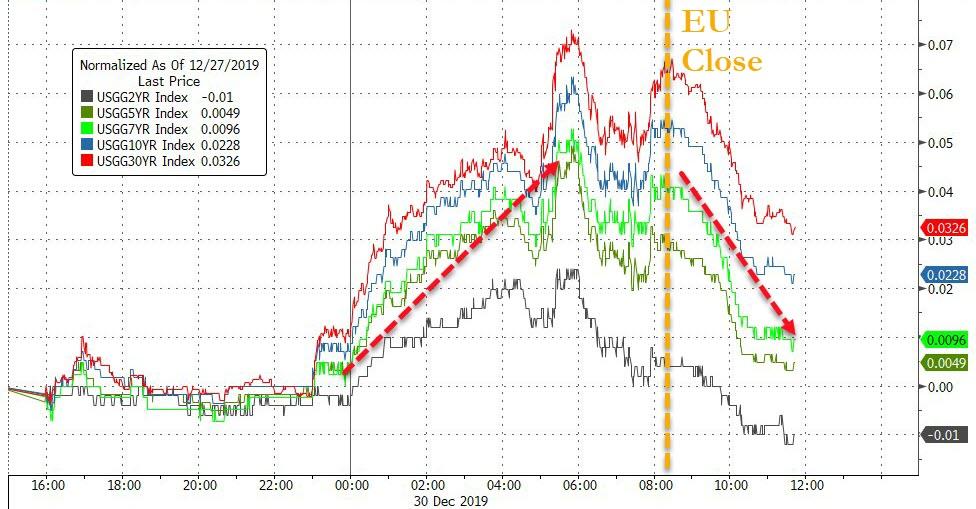
Source: Bloomberg
The 30Y Yield ramped (illquidly) above last week's highs before tumbling back...
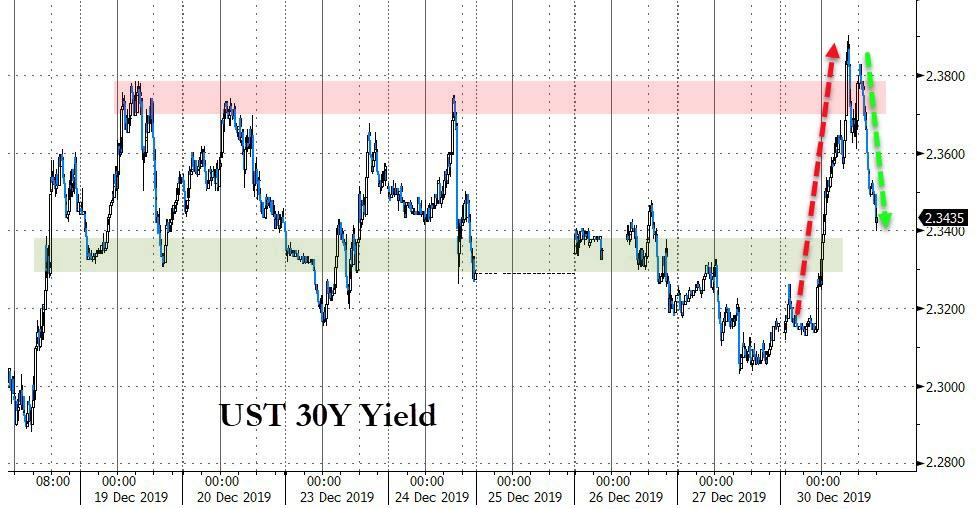
Source: Bloomberg
The yield curve (2s10s) pushed to its steepest since Oct 2018...
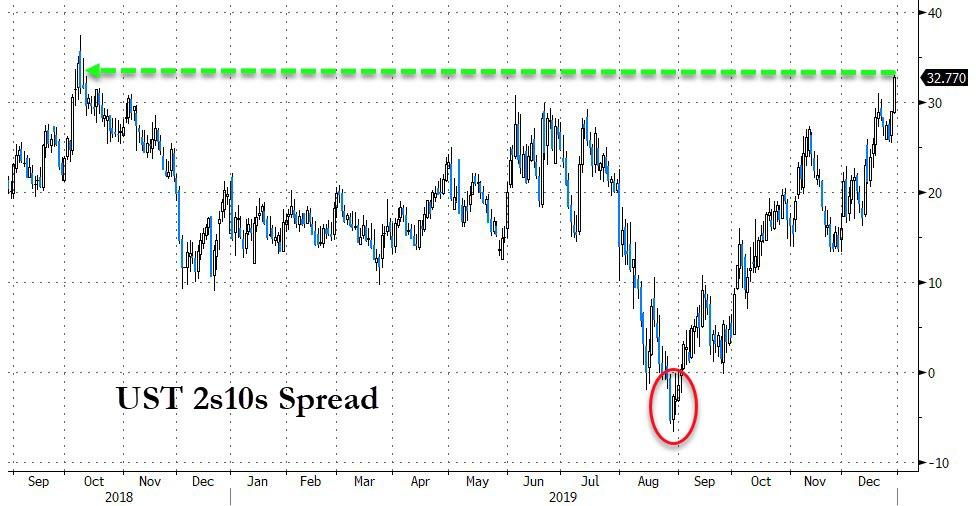
Source: Bloomberg
The Dollar accelerated lower again today with a small rebound after Europe closed...

Source: Bloomberg
The Dollar hit 6-month lows...
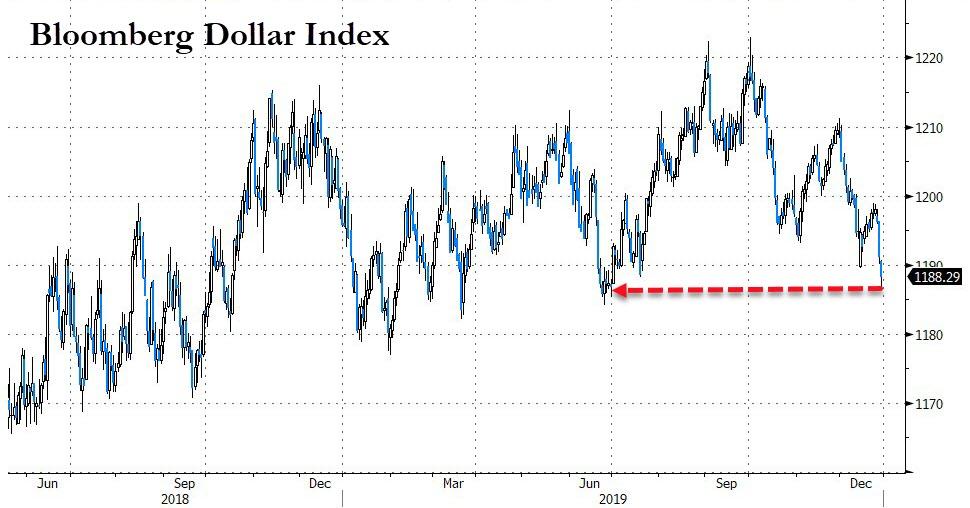
Source: Bloomberg
Cryptos gave back their weekend gains today (but Ethereum remains higher)...
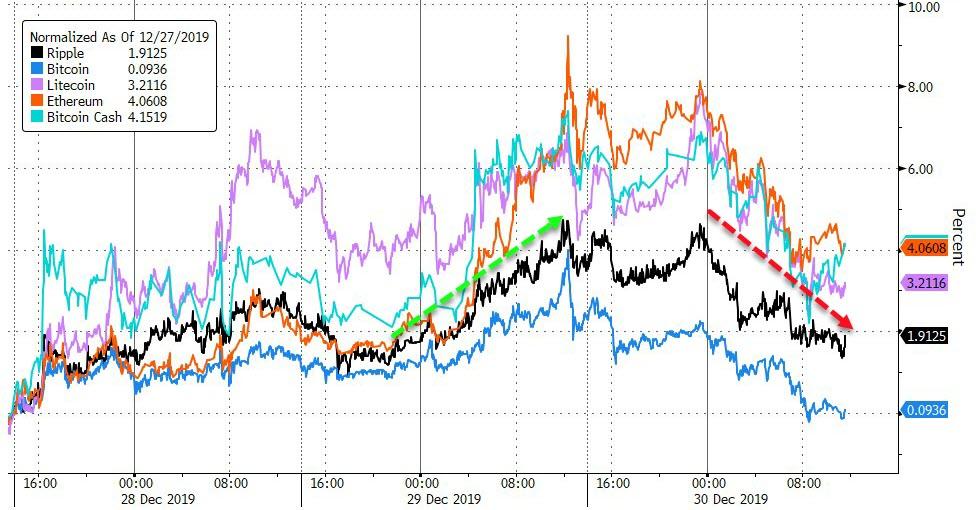
Source: Bloomberg
Bitcoin topped $7500 over the weekend but slipped back to $7200 intraday today...
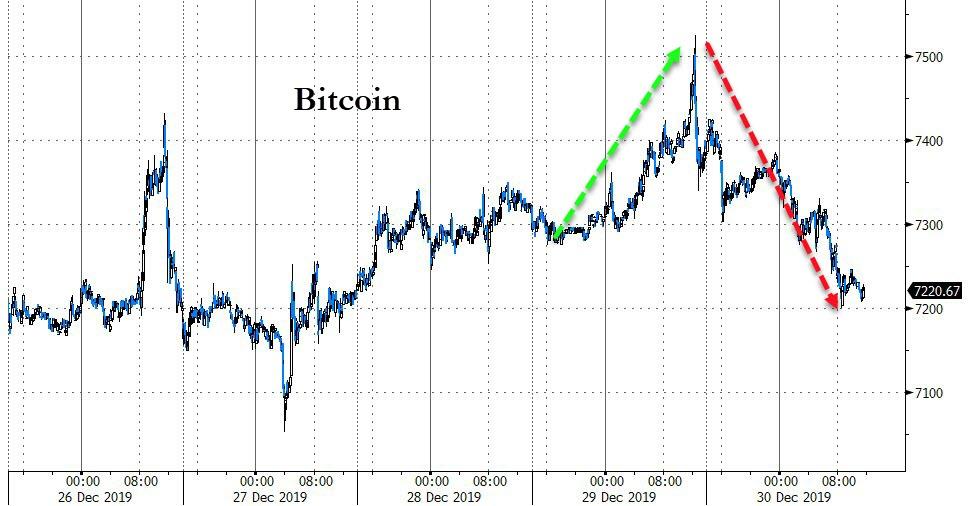
Source: Bloomberg
Silver had another good day as copper and crude lagged (despite an implicit rate cut in China)...

Source: Bloomberg
According to the commodity complex (copper/gold), Treasury yields should be notably lower...
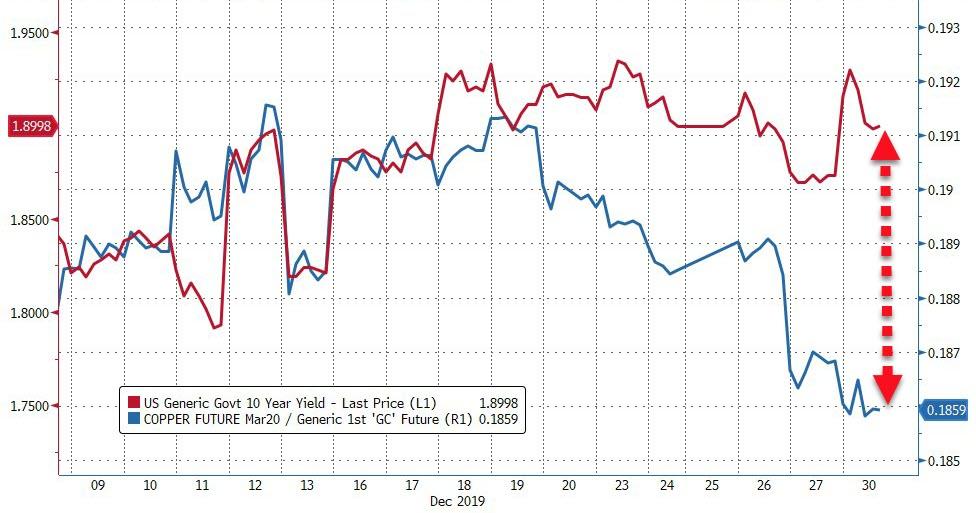
Source: Bloomberg
What does gold know about a resurgence in global negative-yielding debt?
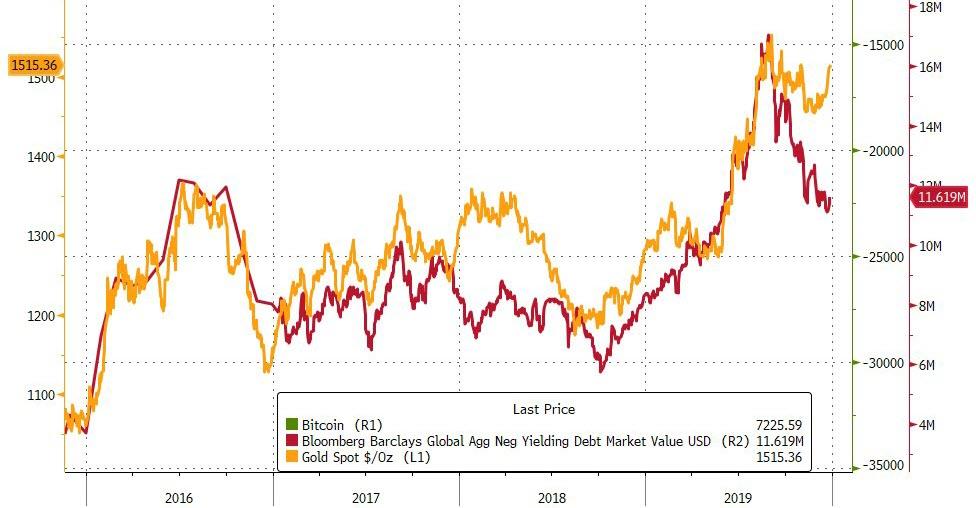
Source: Bloomberg
Finally, Ed Yardeni's Fundamental Stock Market Indicator is signaling the S&P is 20% rich to reality...
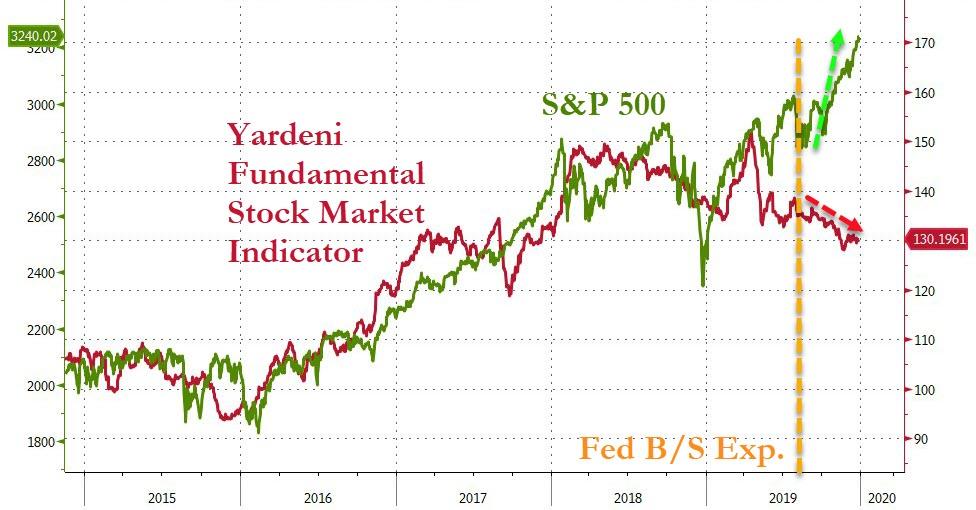
Source: Bloomberg

